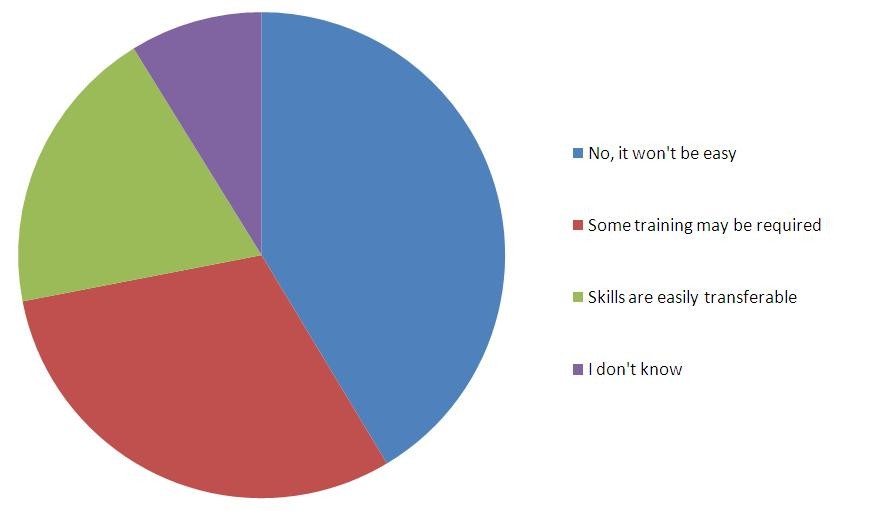Private Sector
Post on: 16 Июль, 2015 No Comment

Private sector development and investment—tapping private sector initiative and investment for socially useful purposes—are critical for poverty reduction. In parallel with public sector efforts, private investment, especially in competitive markets, has tremendous potential to contribute to growth. Private markets are the engine of productivity growth, creating productive jobs and higher incomes. And with government playing a complementary role of regulation, funding, and service provision, private initiative and investment can help provide the basic services and conditions that empower poor people—by improving health, education, and infrastructure.
Investment commitments in infrastructure projects with private participation
Investment in infrastructure projects with private participation has made important contributions to easing fiscal constraints, improving the efficiency of infrastructure services, and extending delivery to poor people. Developing countries have been in the forefront, pioneering better approaches to infrastructure services and reaping the benefits of greater competition and customer focus.
The data on investment in infrastructure projects with private participation refer to all investment (public and private) in projects in which a private company assumes operating risk during the operating period or development and operating risk during the contract period. Investment refers to commitments not disbursements. Foreign state-owned companies are considered private entities for the purposes of this measure.
Investments are classified into two types: investments in physical assets—the resources a company commits to invest in expanding and modernizing facilities—and payments to the government to acquire state-owned enterprises or rights to provide services in a specific area or to use part of the radio spectrum.
The data are from the World Bank’s Private Participation in Infrastructure (PPI) Project database, which tracks infrastructure projects with private participation in developing countries. It provides information on several thousand infrastructure projects in about 140 developing economies. The database contains more than 30 fields per project record, including country, financial closure year, infrastructure services provided, type of private participation, investment, technology, capacity, project location, contract duration, private sponsors, bidding process, and development bank support. Data on the projects are compiled from publicly available information. The database aims to be as comprehensive as possible, but some projects—particularly those involving local and small-scale operators—may be omitted because they are not publicly reported. The database is a joint product of the World Bank’s Finance, Economics, and Urban Development Department and the Public-Private Infrastructure Advisory Facility. Geographic and income aggregates are calculated by the World Bank’s Development Data Group.
- Credit to the private sector Credit is an important link in money transmission; it finances production, consumption, and capital formation, which in turn affect economic activity. The data on domestic credit to the private sector are taken from the banking survey of the International Monetary Fund’s (IMF) International Financial Statistics or, when unavailable, from its monetary survey. The monetary survey includes monetary authorities (the central bank), deposit money banks, and other banking institutions, such as finance companies, development banks, and savings and loan institutions. Credit to the private sector may sometimes include credit to state-owned or partially state-owned enterprises.
Businesses registered
Entrepreneurship is essential to the dynamism of the modern market economy, and a greater entry rate of new businesses can foster competition and economic growth. Data on business registrations are from the World Bank Group’s Entrepreneurship Survey, which includes entrepreneurial activity in more than 100 countries. Survey data are used to analyze firm creation, its relationship to economic growth and poverty reduction, and the impact of regulatory and institutional reforms. Data on total and newly registered businesses were collected directly from national registrars of companies. For cross-country comparability, only limited liability corporations that operate in the formal sector are included.
Business Environment: Enterprise Surveys
The World Bank Group’s Enterprise Survey gathers firm-level data on the business environment to assess constraints to private sector growth and enterprise performance. Standardized surveys are conducted all over the world, and data are available on more than 120,000 firms in about 125 countries. The survey covers 11 dimensions of the business environment, including regulation, corruption, crime, informality, finance, infrastructure, trade. For some countries, firm-level panel data are available, making it possible to track changes in the business environment over time.
Firms evaluating investment options, governments interested in improving business conditions, and economists seeking to explain economic performance have all grappled with defining and measuring the business environment. The firm-level data from Enterprise Surveys provide a useful tool for benchmarking economies across a large number of indicators measured at the firm level.
Most countries can improve regulation and taxation without compromising broader social interests. Excessive regulation may harm business performance and growth. For example, time spent with tax officials is a burden firms may face in paying taxes. The business environment suffers when governments increase uncertainty and risks or impose unnecessary costs and unsound regulation and taxation. Time to obtain licenses and permits and the associated red tape constrain firm operations.
The Enterprise Surveys are implemented by the World Bank’s Financial and Private Sector Development Enterprise Analysis Unit. All economies in East Asia and Pacific, Europe and Central Asia, Latin America and the Caribbean, Middle East and North Africa, and Sub-Saharan Africa (for 2009 and later years) and Afghanistan, Bangladesh, and India draw a sample of registered nonagricultural businesses, excluding those in the financial and public sectors. Samples for other economies are drawn only from the manufacturing sector and are footnoted. Typical Enterprise Survey sample sizes range from 150 to 1,800, depending on the size of the economy. In each country samples are selected by stratified random sampling, unless otherwise noted. Stratified random sampling allows indicators to be computed by sector, firm size, and region and increases the precision of economy-wide indicators compared with alternative simple random sampling. Stratification by sector of activity divides the economy into manufacturing and retail and other services sectors. For medium-size and large economies the manufacturing sector is further stratified by industry. Firm size is stratified into small (5–19 employees), medium-size (20–99 employees), and large (more than 99 employees). Geographic stratification divides the national economy into the main centers of economic activity.
- Informal payments to public officials In some countries doing business requires informal payments to “get things done” in customs, taxes, licenses, regulations, services, and the like. And regulations that require an undue number of meetings with tax officials can lead to increased informal payments to officials. Such corruption harms the business environment by distorting policymaking, undermining government credibility, and diverting public resources.

- Infrastructure reliability and innovation The reliability and availability of infrastructure benefit households and support development. Firms with access to modern and efficient infrastructure—telecommunications, electricity, and transport—can be more productive. The value lost due to electrical outages (as % of sales) is one measure of how unreliable infrastructure negatively affects firms. Firm-level innovation (with the proxy measure of ISO certification) and use of modern technology may help firms compete.
Business environment: Doing Business indicators
The economic health of a country is measured not only in macroeconomic terms but also by other factors that shape daily economic activity such as laws, regulations, and institutional arrangements. Doing Business indicators such as the ease of doing business, the number of start-up procedures to register a business, the time required to start a business, the time to resolve an insolvency, and tax rates and number of payments, measure the extent of business regulation, gauge regulatory outcomes, the extent of legal protection of property, and the tax burden on businesses.
The fundamental premise of the Doing Business project is that economic activity requires good rules and regulations that are efficient, accessible to all who need to use them, and simple to implement. Thus some Doing Business indicators give a higher score for more regulation, such as stricter disclosure requirements in related-party transactions, and others give a higher score for simplified regulations, such as a one-stop shop for completing business startup formalities.
In constructing the indicators, it is assumed that entrepreneurs know about all regulations and comply with them; in practice, entrepreneurs may not be aware of all required procedures or may avoid legally required procedures altogether. But where regulation is particularly onerous, levels of informality are higher, which comes at a cost: firms in the informal sector usually grow more slowly, have less access to credit, and employ fewer workers—and those workers remain outside the protections of labor law. The indicators can help policymakers understand the business environment in a country and—along with information from other sources such as the World Bank’s Enterprise Surveys—provide insights into potential areas of reform.
Doing Business data are collected with a standardized survey that uses a simple business case to ensure comparability across economies and over time—with assumptions about the legal form of the business, its size, its location, and nature of its operation. Surveys in more than 180 countries are administered through more than 8,200 local experts, including lawyers, business consultants, accountants, freight forwarders, government officials, and other professionals who routinely administer or advise on legal and regulatory requirements.
The Doing Business project encompasses two types of data: data from readings of laws and regulations and data on time and motion indicators that measure efficiency in achieving a regulatory goal. Within the time and motion indicators cost estimates are recorded from official fee schedules where applicable. The data from surveys are subjected to numerous tests for robustness, which lead to revision or expansion of the information collected.
The Doing Business methodology has limitations that should be considered when interpreting the data. First, the data collected refer to businesses in the economy’s largest city and may not represent regulations in other locations of the economy. To address this limitation, sub-national indicators are being collected for selected economies. These sub-national studies point to significant differences in the speed of reform and the ease of doing business across cities in the same economy. Second, the data often focus on a specific business form—generally a limited liability company of a specified size—and may not represent regulation for other types of businesses such as sole proprietorships. Third, transactions described in a standardized business case refer to a specific set of issues and may not represent the full set of issues a business encounters. Fourth, the time measures involve an element of judgment by the expert respondents. When sources indicate different estimates, the Doing Business time indicators represent the median values of several responses given under the assumptions of the standardized case. Fifth, the methodology assumes that a business has full information on what is required and does not waste time when completing procedures.
- Taxes payable by businesses The total tax rate payable by businesses provides a comprehensive measure of the cost of all the taxes a business bears. It differs from the statutory tax rate, which is the factor applied to the tax base. In computing business tax rates, actual tax payable is divided by commercial profit. The indicators covering taxes payable by businesses measure all taxes and contributions that are government mandated (at any level—federal, state, or local), apply to standardized businesses, and have an impact in their income statements. The taxes covered go beyond the definition of a tax for government national accounts (compulsory, unrequited payments to general government) and also measure any imposts that affect business accounts. The main differences are in labor contributions and value-added taxes. The indicators account for government-mandated contributions paid by the employer to a requited private pension fund or workers insurance fund but exclude value-added taxes because they do not affect the accounting profits of the business—that is, they are not reflected in the income statement.
Data sources
Data on investment commitments in infrastructure projects with private participation are from the World Bank’s PPI Project database. Data on domestic credit are from the IMF’s International Financial Statistics. Data on business registration are from the World Bank’s Entrepreneurship Survey and database. Data on the business environment are from the World Bank Group’s Enterprise Surveys and the World Bank’s Doing Business project.














